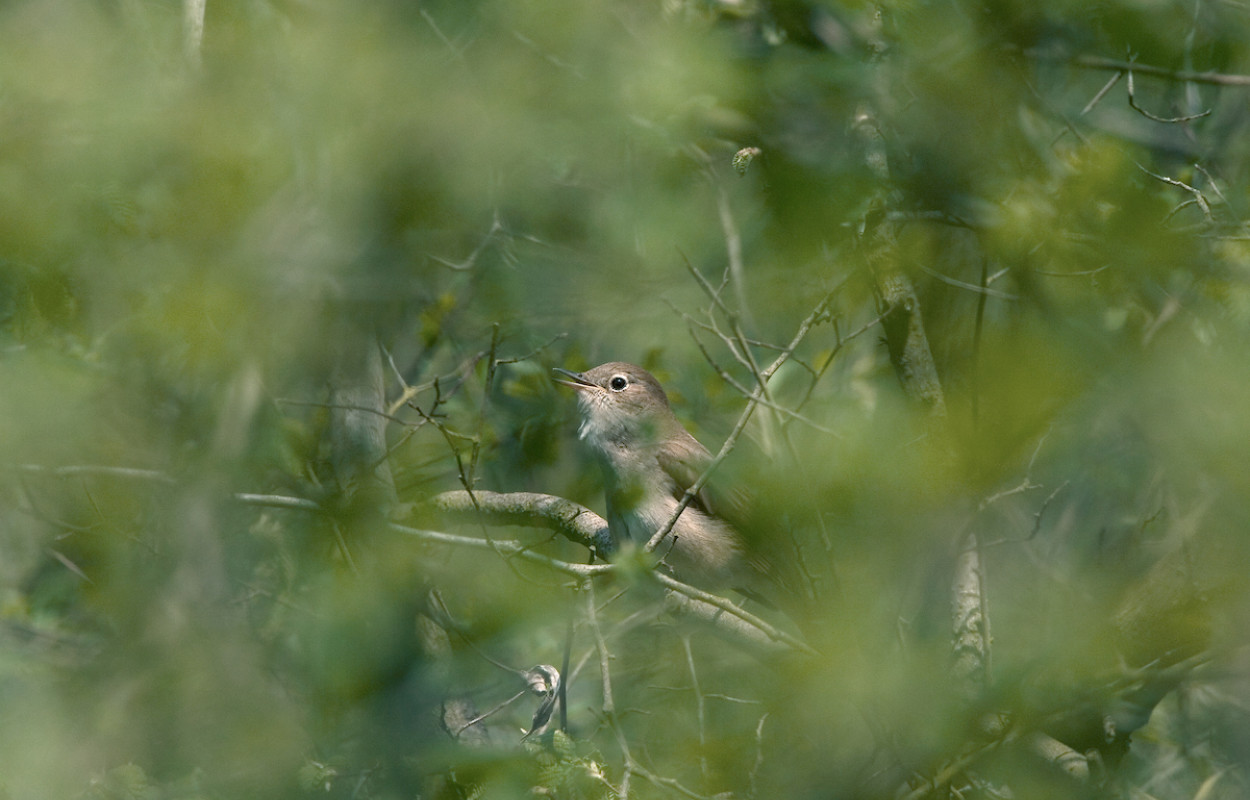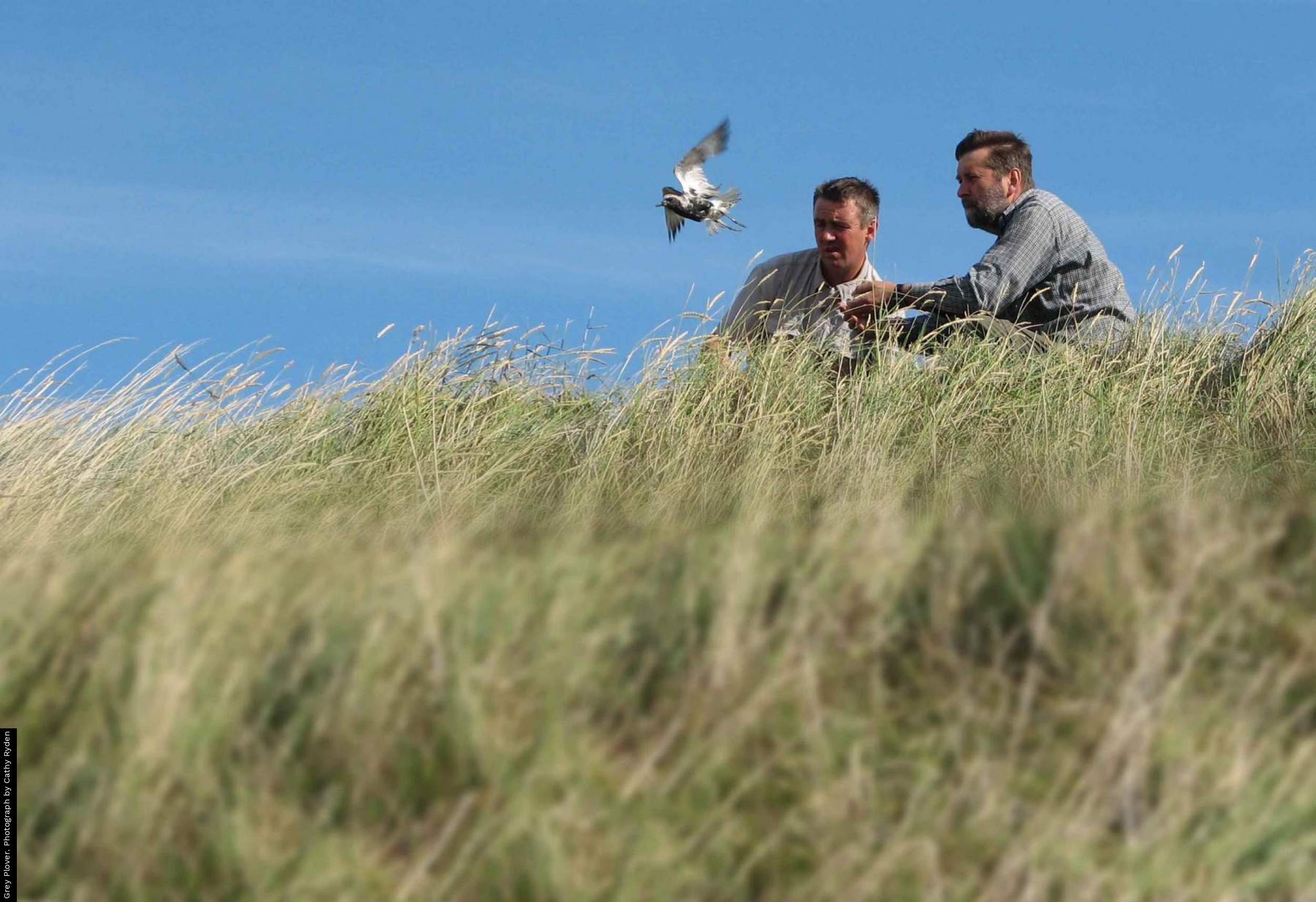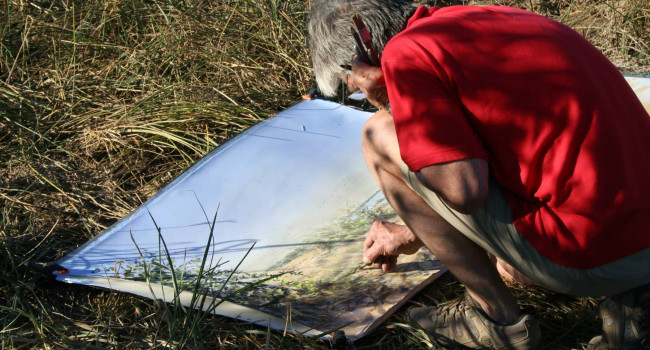Topics
Declining migrants

Declines of Afro-Palaearctic migrants
Breeding populations of Afro-Palaearctic migrants (those species which travel from tropical Africa to breed each spring) are falling not only in the UK, but across Europe. Some of our best-known and loved migratory species have undergone the steepest declines, including Swift, Nightingale, Cuckoo, House Martin and Spotted Flycatcher. From the late 1960s to the mid 1980s, species that winter in the Sahel - the arid zone immediately south of the Sahara desert - underwent severe declines. These included Whitethroat, Sand Martin and Sedge Warbler, and BTO research demonstrated that they were being affected by a prolonged drought in that region of Africa. More recently, however, our research has shown that those species currently in decline are mostly those that winter further south, in the humid tropics of West and Central Africa or in Southern Africa. The reasons for these declines are as-yet unclear and much recent BTO research has been directed towards trying to understand them.
Some of our best-known and loved migratory species have undergone the steepest declines, including Swift, Nightingale, Cuckoo, House Martin and Spotted Flycatcher.
Complex causes
The causes of these declines are likely to be complicated. Many of these species occupy complex habitats such as woodland whilst they are breeding and they may be impacted by processes occurring anywhere in their annual cycle. They might use several sites separated by thousands of kilometers through the year and the processes driving declines may occur at several of these, and there may be interactions between events occurring at different stages.
Until recently we lacked even a basic understanding of how most of these birds spent the majority of the year when they are not with us. That is now changing due to the miniaturisation of tracking devices, but even for those species we now know the most about, there is still much to learn about their annual cycles and how different events affect breeding populations.

Tracking migrations
The miniaturisation of tracking devices has revolutionised our knowledge of the annual cycles of Afro-Palaearctic migrants. We have been able to track Cuckoos with satellite transmitters, teaching us not only where these birds go, but also where they die. This research showed that the birds take one of two routes to reach Africa, travelling either via Italy or via Spain, and that fewer of the birds travelling via Spain survived to reach tropical Africa. The proportion of birds from different parts of the country that took the more hazardous route via Spain correlated with the degree of local population decline, suggesting that it was linked with this mortality on migration. How this link works, however, is subject to ongoing research aiming to determine the relative impact of conditions in the UK versus those in southern Europe and how this might differ between birds using each route.
Many of our smaller migrants can now be tracked with geolocators, which are small data loggers that record light intensity against time. They allow migrations to be reconstructed, from daylength and the timing of solar midday. These devices were first used to track the migrations of albatrosses, but as they became miniaturised the BTO began to use them, initially on Swifts and Nightingales. The smallest now weigh only a third of a gram and we have used them on species several species including Nightingales, Whinchats, Tree Pipits, Spotted Flycatchers and even Willow and Wood Warblers.

Breeding grounds - insect declines, climate change and habitat loss
There have been huge changes to the UK environment in recent decades. These are likely to have impacted populations of Afro-Palaearctic migrants. It is difficult to imagine that they have not been affected by the huge recent declines of insect populations across Europe, given that most have evolved to exploit this once superabundant resource of the northern summer. So far, however, it is not clear to what extent declines have been driven by these changes versus those occurring in the other places migrants use through their annual cycle. This may also differ between species.
Food availability may be waning for a number of reasons. Climate change has lead to hotter, drier summers which may be directly contributing to insect declines in some habitats. Warmer and earlier springs may cause migrants, especially those that have not advanced their spring arrival to the UK, to miss the seasonal peaks of insect abundance that they depend on for breeding. These effects may either directly impact breeding success or subsequently reduce survival of birds that have had to work harder to raise their young. Other factors that may contribute to reductions in food availability include the application of agricultural chemicals and removal of insects’ habitat.
The availability of high-quality habitat has also probably greatly diminished for some bird species, particularly those occupying scrub and dense undergrowth in woodland such as the Nightingale. This is as a result of changes in woodland management, increasingly intense deer browsing and clearing of patches of scrub. These habitats are poorly monitored, however, so it is not easy assess the extent of this change and its impacts.
BTO's research approach, monitoring migrant populations across years and following individuals throughout their annual cycles, will continue to improve our understanding of why so many migrant birds are declining, and should ultimately inform effective conservation action to reverse these population trends, so we can continue to welcome our summer visitors for generations to come.
Support migrant research
Learn about our Cuckoo Tracking Project, and consider becoming a sponsor.
Donate to our Spotted Flycatcher Appeal to help us understand the reasons why this much-loved migrant is declining.
Donate to Spotted Flycatcher AppealRelated Publications

Declines in Afro-Palearctic migrant birds are linked to bioclimatic wintering zone, possibly via constraints in arrival time advancement
Migrant declines linked to wintering grounds
Bird Study
Many UK-breeding birds that migrate to Africa for the winter have undergone dramatic declines in recent decades. New BTO research shows that both winter habitat and the geographical regions visited had a significant effect on population trends, as measured by BBS. Species overwintering in the tropical Humid Zone of west and central Africa declined more rapidly than migrants wintering elsewhere. Species affected included four on the Birds of Conservation Concern Red List: Turtle Dove, Tree Pipit, Spotted Flycatcher and Cuckoo. However, generalist species did well no matter where they wintered, because their ability to adapt to a wide range of habitats allows them to cope with changes to land use (e.g. deforestation) in their wintering grounds. Conversely, habitat specialists are likely to be adversely affected by accelerating changes in their wintering grounds. This research highlights the difficulties and complexities in defining the numerous and often interacting factors underpinning population changes.
More Details
Population decline is linked to migration route in the Common Cuckoo, a long-distance nocturnally-migrating bird
Cuckoo declines linked to different migration routes to Africa
Nature Communications
When the BTO began ground-breaking Cuckoo tracking research in 2011, we had very little idea where these birds spent the winter or how they got there. Our latest research not only reveals this information, but also shows that Cuckoos’ use of autumn migration routes helps explain population declines.
More Details
The sensitivity of breeding songbirds to change in seasonal timing is linked to population change but cannot be directly attributed to the effects of trophic asynchrony on productivity.
Does the early bird catch the caterpillar?
Global Change Biology
Recently published research led by the British Trust for Ornithology (BTO) sheds new light on the impact that climate change has had on common and widespread songbirds across the UK.
More Details
Long-term changes in the migration phenology of UK breeding birds detected by large-scale citizen science recording schemes
Summer migrants stay for longer as the UK climate warms
Ibis
New BTO research has used volunteer data from long-running citizen science schemes to show how the timing of bird migration to and from the UK has changed since the 1960s.
More Details





Share this page